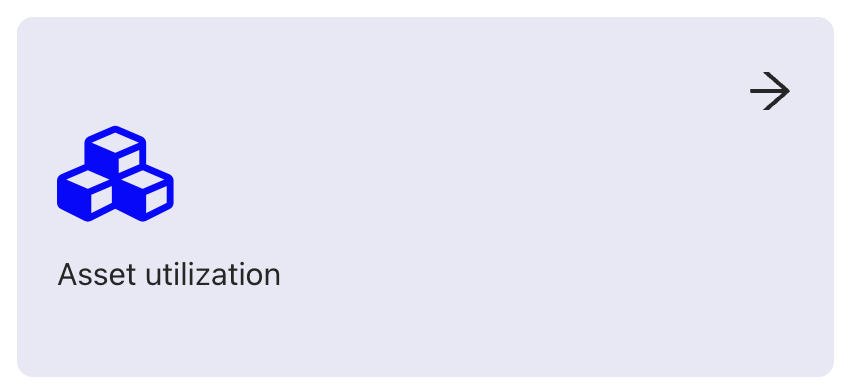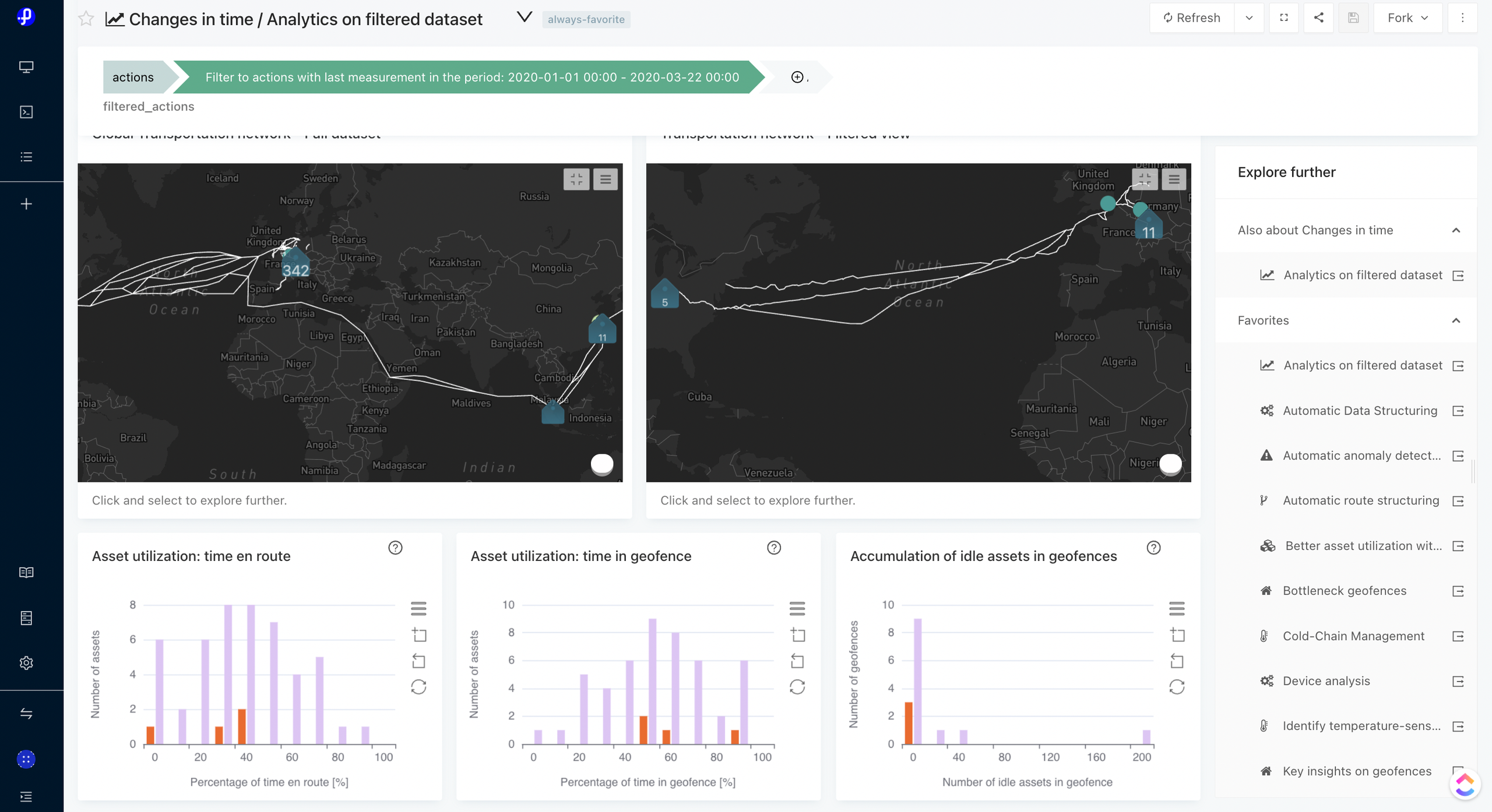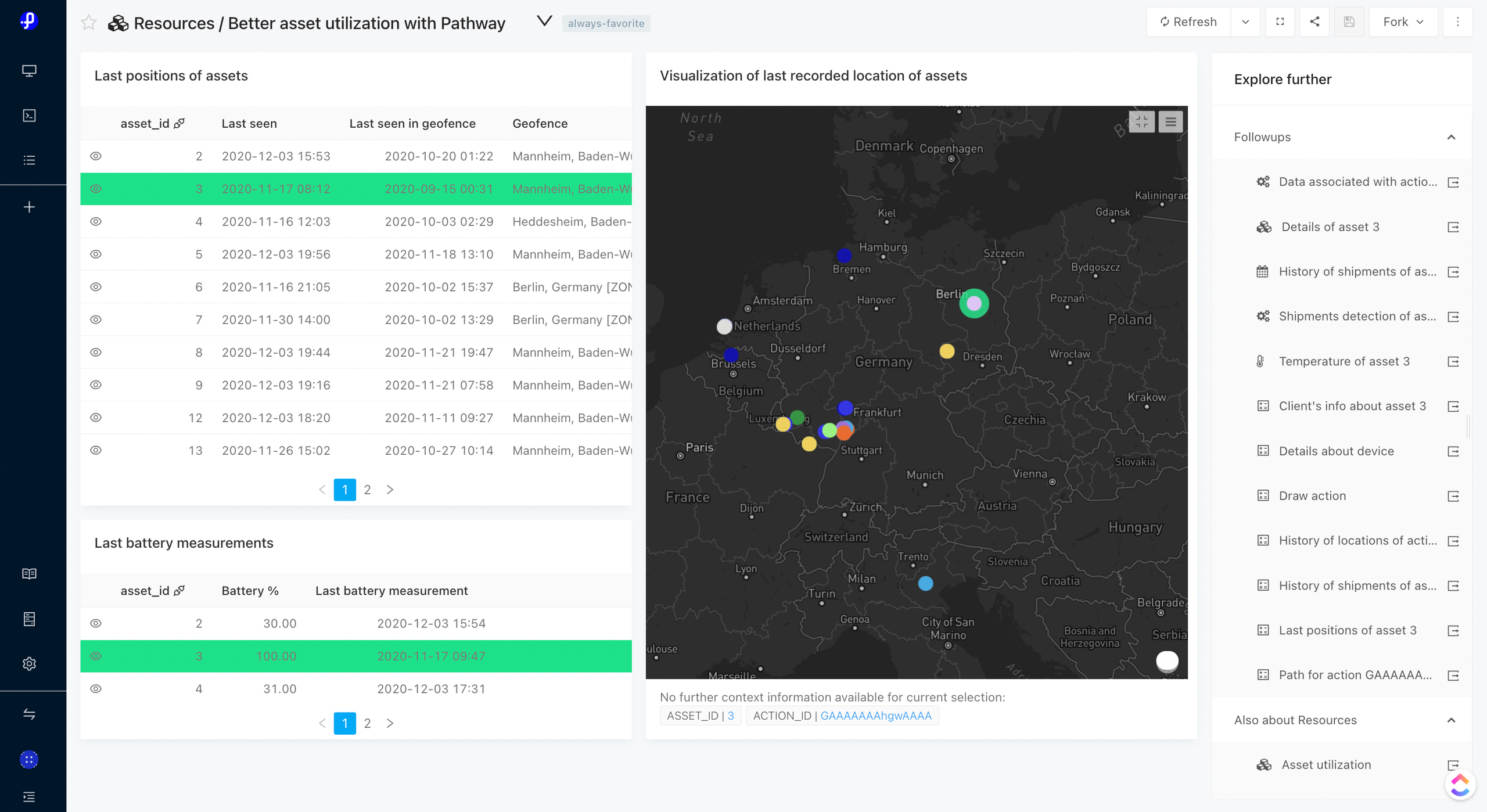Improving asset utilization with Pathway: combining IoT data with real-time data processing
 Pathway Team
Pathway TeamIntroduction
The term “asset utilization” refers to the rate at which an asset is used and its efficiency. In the modern world, asset utilization is becoming increasingly important as organizations strive to optimize their operations, reduce capital expenditure, and maximize their efficiency.
With the emergence of the Internet of Things (IoT), asset utilization can be improved by connecting physical assets (vessels, trucks, containers, grids, equipment, etc.) to the Internet, gathering data, and using analytics to inform decisions.
This whitepaper will discuss how real-time IoT data processing can improve asset utilization and offers best practices to achieve this goal.
Pathway is a reactive data processing framework that lets you build elegant and ultra-powerful real-time data products. Pathway Logistics App is the lighthouse data product built in the Pathway framework: it is a one-stop-shop cloud-based application to provide immediately actionable insights on top of data for logistics assets, including IoT data and status data.
IoT and Asset Utilization
IoT refers to the network of physical devices and sensors that are connected to the Internet. These devices are embedded with electronics, software, sensors, and network connectivity, allowing them to interact with each other, transmit data, and receive instructions. We will discuss the difficulties of IoT devices to connect and transmit data in some environments later, and how they can be addressed.
IoT can improve asset utilization by providing real-time data on asset performance. This data can be used to ensure optimal asset usage (also called “Overall Equipment Effectiveness), reduce unplanned downtime or idle time, and optimize maintenance spend. Ensuring a good asset utilization ratio is key for economic reasons, but also to reduce the impact of industrial players, by buying and consuming only the resources truly needed for their business.
CAPEX-intensive industries such as Transportation, Logistics, Supply chains, Telecom, and Utilities are the ones to benefit the most from a data-driven asset utilization strategy.
IoT sensors' performance is closely intertwined with the quality of the connectivity. Some IoT devices operate in environments where connectivity is uncertain (high seas in the context of maritime shipping, offshore operations, or operations in countries known to alter signals with GPS jammers for instance, etc.)
Pathway has worked with clients experiencing such challenges from the beginning. Pathway applies a data processing logic that takes into account the specificities of IoT data (sparse data, missing measurements or double measurements, outliers, etc.) along with business logic.
Pathway supports time series that contain both the time when the events occur and the time at which the system receives the data sent by the device. For the most technical readers, just know that at Pathway we are big fans of bitemporal modeling, “a technique designed to handle historical data along two different timelines. This makes it possible to rewind the information to "as it actually was" in combination with "as it was recorded" at some point in time. In order to be able to do so, information cannot be discarded even if it is erroneous.”
Leveraging real-time data Processing to improve asset utilization
Organizations looking to improve asset utilization should consider the following strategies:
- Identify assets to monitor: The first step in improving asset utilization is to identify the assets that will be monitored. Once the assets are identified, IoT devices can be used to track and monitor the assets in real-time. Based on your exact use case and segment, you might want to optimize the choice and settings of your device based on the location where you operate, or the most relevant trade-off between frequency of measurements and battery consumption for instance.
Pathway is not an IoT provider. However, our Enterprise clients have been using a wide range of devices for various use cases. Some of our Enterprise clients have used Pathway very early on in their IoT deployment, to assess which devices were working best taking into account various parameters.
Want to learn more about how La Poste reduced the cost of their IoT deployment by 50%? Take a look at the infographics.
- Analytics, and Predictive Analytics, in real-time: IoT devices provide real-time data that can be used to monitor and track utilization metrics. This data can be used to understand current processes and identify areas where improvements can be made. Alerts can be sent in real-time to operational teams so that they can react quickly and effectively.

- Make your business decisions data-driven: From the analytics collected, review your asset utilization ratio. Does it correspond to your assumption? Are there assets that are severely under-utilized? Are you getting the maximum from your capital expenditures? Make your CAPEX strategy data-driven and stop buying additional assets that you do not need.
Success stories and ROI, thanks to Pathway
Some of our Enterprise clients such as La Poste, have been using Pathway to optimize their asset utilization.
Pathway helps Enterprise clients to answer some crucial questions that have a direct impact on the bottom line and to generate significant cost savings.
Thanks to Pathway, business users such as the Transportation & Flows Project Leader at La Poste were able to demonstrate how they could optimize their equipment spending, and align capital expenditure with the actual needs of the company.
Specifically, Pathway made it possible to identify and locate unused assets and reallocate them in the network to satisfy the business demand. It was also possible to identify locations where assets would get stuck or stay idle, causing shortages in other parts of the network.

Some assets were lost - or were temporarily disappearing from the network - and the current TMS (Transport Management System) was not able to assess the location where those assets were likely to be. Indeed, while some assets were lost (e.g. a subcontractor had left them in a remote unloading area) or left idle in a parking lot without emitting data, some were being “borrowed” by subsidiary companies with no official traces of such process. Thanks to Pathway, it was possible to easily visualize the assets with their latest location and infer where they might have been based on the data available.

Monitoring asset conditions in light of predictive maintenance is also a key lever to improve operational efficiency, by acting proactively on elements that might eventually cause significant inefficiencies or repair costs.
Another use case was directly related to subcontractor management and anomalous usage of lent equipment. Pathway allowed our clients to identify whether subcontractors were respecting their contractual obligations, e.g. using the main highway instead of a secondary road. The client was paying for their subcontractors to go through faster, high-quality highways, and paying for tolls. On the other side, subcontractors wanted to increase their own margins and keep the toll money and were using longer secondary roads that were in poorer conditions, causing damage to the equipment, a risk to the cargo, and additional costs that should have been avoided.
How does Pathway work in practice?
Pathway’s core technology is a state-of-the-art platform for building real-time and reactive data products that scale.
Pathway enables to build one reliable data model, which can be built on top of numerous data sources (IoT and other event streams), and data providers, across geographies. It allows stitching together different data providers and internal applications together into one resilient data product. It then uses context to understand the processes, learn what is happening in real-time at scale, and let operators have feedback loops with the systems.
Caption: Before/ After: Automatic & Real-time structuring of IoT data with Pathway.
Asset utilization and availability
- Automatically evaluate asset utilization and highlight underutilized assets.
- Identify locations where assets (containers, vehicles) are currently idling.
- Detect anomalies in asset availability (lack or hoarding/stockpiling) at locations.
- Logistics Forecast availability of empty containers at specified locations, worldwide, over the next 30 days.
Benchmarking assets
- Compare utilization and performance of assets on locations/routes selected for comparison, across client accounts.
- Compare operation times and waiting times across assets and client accounts at specified locations.
Conclusion
Real-time data processing of IoT data unlocks new possibilities to improve asset utilization through. By leveraging the data collected, organizations can improve their overall processes and optimize their capital expenditure.
Would like to know how to optimize your assets and enable real-time control over them? Reach out to demo@pathway.com

Pathway Team





